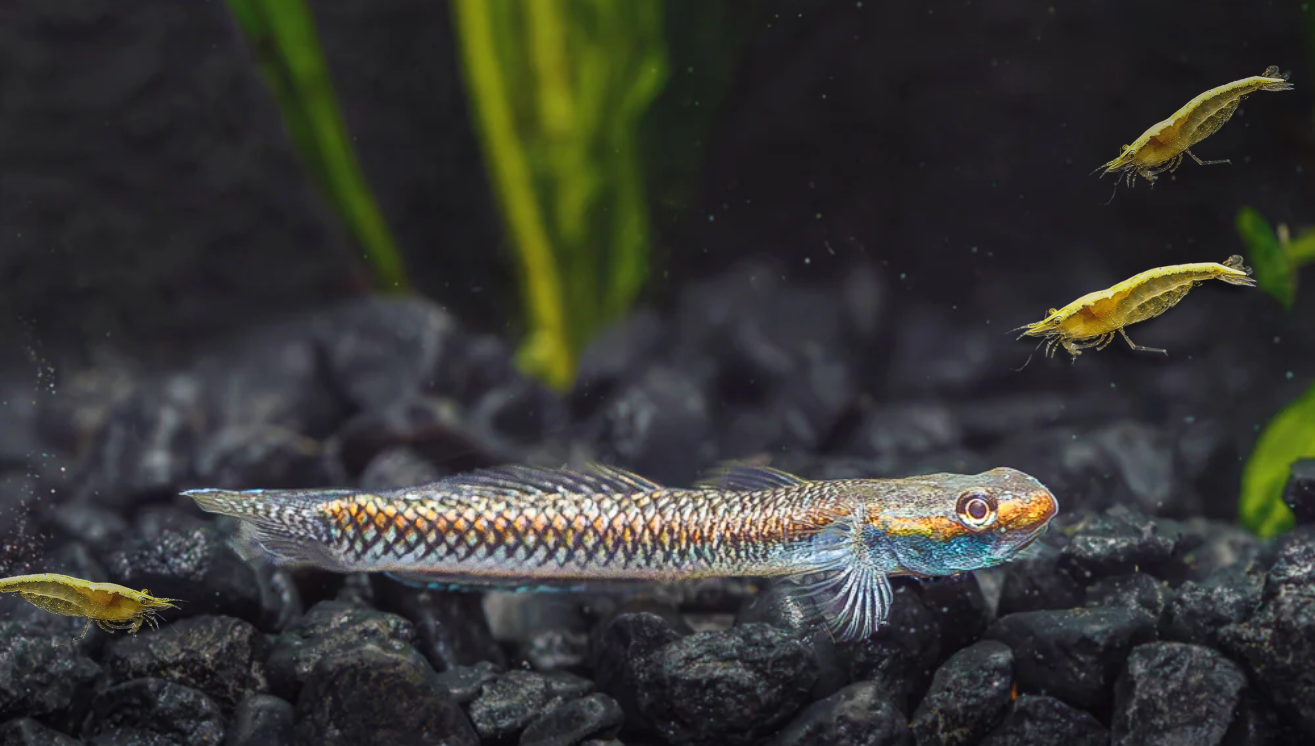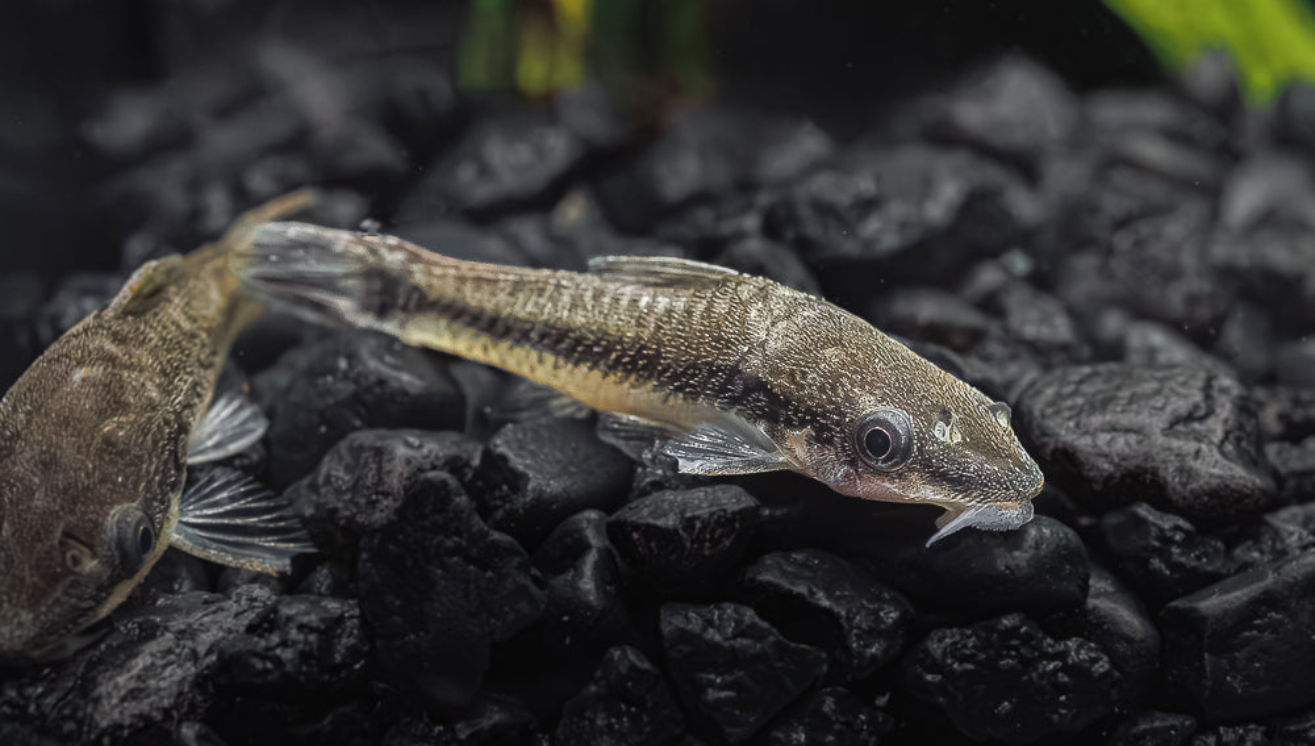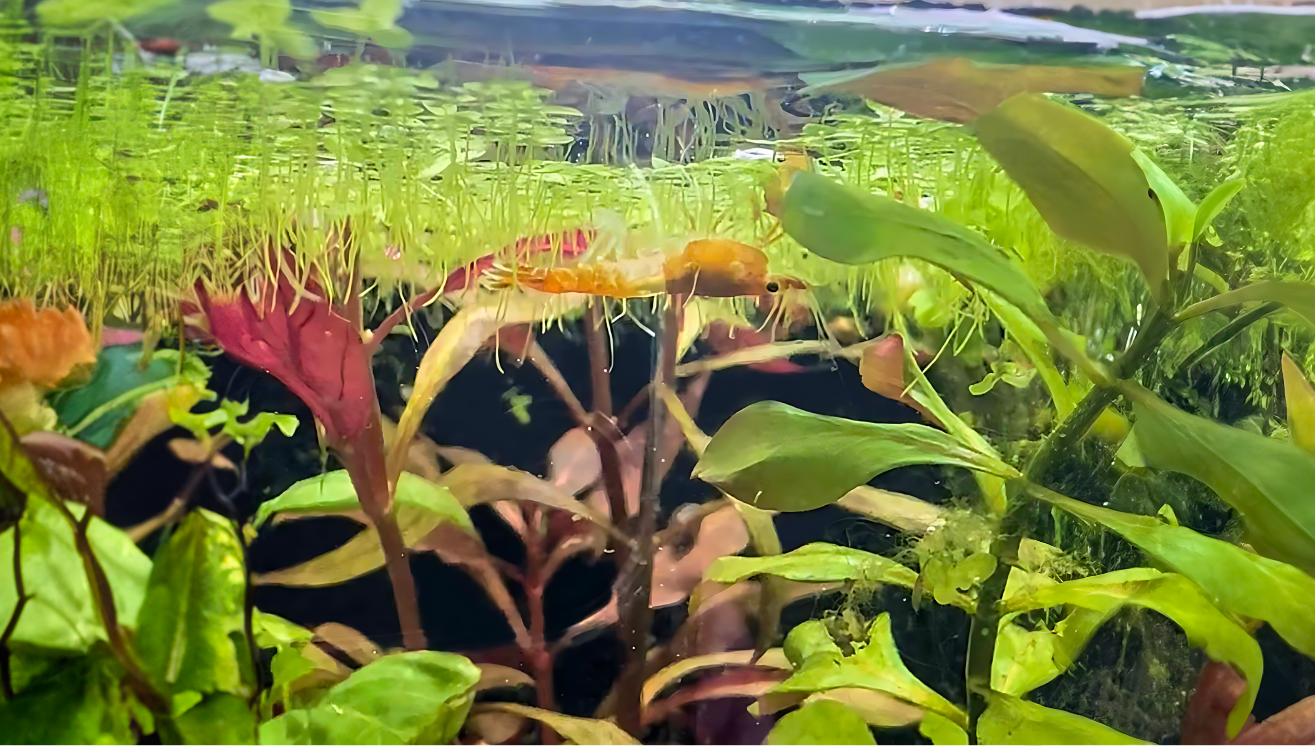Your Cart is Empty
🚚 Flat-Rate FedEx Priority Overnight — Just $26.99 (Limited-Time Special!) | FREE over $200
🚚 Flat-Rate FedEx Priority Overnight — Just $26.99 (Limited-Time Special!) | FREE over $200
🚚 Flat-Rate FedEx Priority Overnight — Just $26.99 (Limited-Time Special!) | FREE over $200
by Emily Dourm May 24, 2024 3 min read

The term ‘Shrimp safe’ isn’t always a guarantee in the world of aquariums, so we prefer using the term ‘compatible’ when discussing fish and shrimp cohabitation. In their natural habitat, shrimp often serve as prey for many fish species, so there’s always a degree of risk involved. However, certain fish species are less likely to disturb or harm your shrimp companions. If you’re considering adding gobies to your community tank, here are some options to consider. Gobies, known for their peaceful nature and smaller size, can often coexist harmoniously with shrimp. Some popular goby species that are generally considered shrimp-friendly include the blue neon, cobalt blue, and orange-finned gobies. Let’s dive into more about these fish. The Blue Neon Stiphodon Goby , known for its vibrant blue dorsal fins and striped body, is a popular choice among aquarists for its striking appearance and peaceful demeanor. Whether housed in pairs or groups, these small creatures bring personality and charm to mature aquariums, though precautions should be taken to prevent their escape, as they are adept climbers. Despite their small size (up to three inches), they’re robust companions, often enjoying the company of Rasboras and non-aggressive Tetras. While the Blue Neon Stiphodon Goby adds vibrancy to any tank, it’s better suited for experienced aquarists due to its escape-artist tendencies and strict water-quality requirements. Regular maintenance is crucial to ensure their well-being, as they’re sensitive to declines in water quality. Originating from Japan, Taiwan, and Micronesia, they thrive in shallow, fast-moving water and benefit from tanks with ample organic structures for algae and biofilm growth. Adequate space and territory are essential, especially if multiple males are present. Native to Japan, Taiwan, and Micronesia, the Blue Neon Stiphodon Goby is found in shallow, fast-moving water and is particularly sensitive to declines in water quality. Ensure your tank is set up with ample organic structures where algae and biofilm can grow, as this is essential to its health and longevity. If multiple males are present, provide enough territory to avoid aggression. The Cobalt Blue Dwarf Goby is a peaceful, small fish with a friendly demeanor compatible with shrimp and other small aquatic creatures, making them an excellent choice for beginners starting a community tank. The stunning deep-blue hue, especially prominent in aging males, brings life and character to your aquarium. Easy to care for and peaceful, these gobies mainly feed on biofilm and algae, and pair well with Rasboras, Tetras, Loaches, and other nano fish. They thrive in fast-flowing streams and above waterfalls in their natural habitat. Oxygen-rich water is essential for their survival, and they prefer an aquascape with river rocks to mimic their native environment (though that’s optional). Due to their sensitivity to changes in water parameters, maintaining a stable tank environment is crucial for their well-being. The Orange-fin Stiphodon Goby , also known as Stiphodon maculidorsalis, stands out with its vibrant orange dorsal fins and striped body, making it a captivating addition to mature aquariums. With their peaceful demeanor and entertaining personality, these gobies are popular among aquarists. They can be housed in pairs or groups, but precautions should be taken to prevent escapes, as they tend to climb glass. Despite their small size (up to three inches), they bring excitement to any tank and pair well with Rasboras and non-aggressive Tetras. Native to Indonesia, the Orange-fin Goby inhabits shallow, fast-moving water and is sensitive to declines in water quality. Ensure your tank has plenty of organic structures for algae and biofilm growth. If you keep multiple males, make sure the aquarium is large enough to provide ample territory.Blue Neon Stiphodon Goby

Ideal Conditions
Cobalt Blue Dwarf Goby

Ideal Conditions
Orange-fin Stiphodon Goby

Ideal Conditions
Comments will be approved before showing up.

by Brooke Lees October 04, 2024 2 min read
Aquarium plants do much more than add beauty to a tank, they help maintain water quality and provide natural shelter for your aquatic pets. Among the many available options, Hornwort and Anacharis stand out for their versatility, ease of care, and benefits to aquarium ecosystems. Let’s dive deeper into the differences and similarities between these two popular plants.

by Brooke Lees September 20, 2024 2 min read

by Brooke Lees September 13, 2024 3 min read